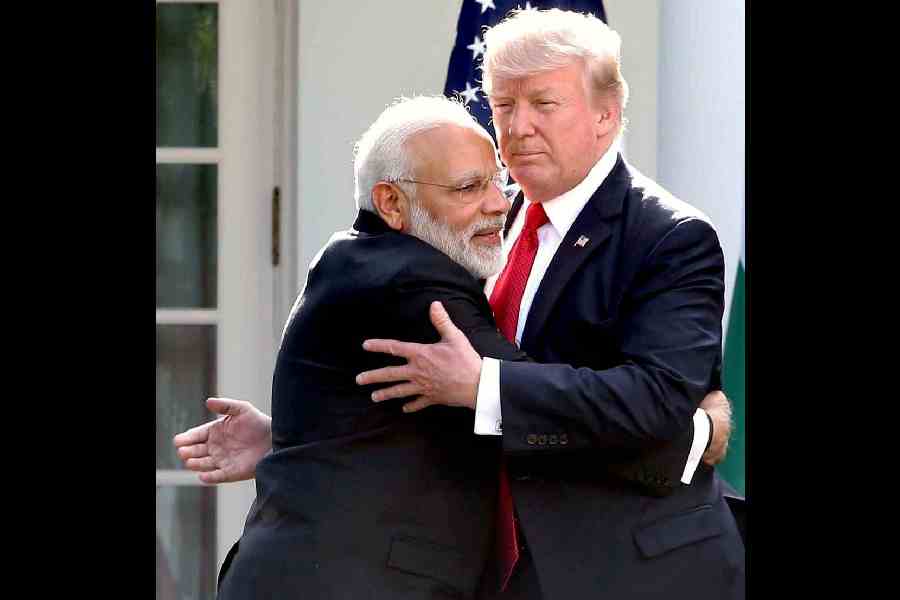Calcutta, April 6:
The cable TV operator charges each subscriber between
Rs 100 and 200 per month. But it costs him only about Rs 65-70 to beam
49 pay and free-to-air channels. The cost includes the five channels that
remained blacked out for the fourth day today. Without these, his cost
will be Rs 47 to 52.
Operators pulled STAR Plus, AXN, TNT, Discovery
and Animal Planet ? together costing Rs 18 ? out of subscribers? TV sets
in protest against these five channels? decision to charge for beaming
them.
The reason cited by them for blacking out these
channels was that subscribers were not prepared to pay. That this argument
does not hold water is clear from the cost they bear and the price they
are charging.
On the pretext of these channels turning pay from
free-to-air, many operators have slapped subscribers with demands for raising
rates. But the stirrings of consumer resistance are already in evidence.
Some subscribers have decided to move consumer courts against operators
for denying them the five channels.
The unity of operators is also cracking as realisation
is dawning that the agitation may be doing them more harm than good. First,
the boycott has attracted attention to the unregulated nature of their
business. With no monitor for the cable TV business, charges are arbitrary
with little relation either to the cost or quality of service. Few, if
any, operators in the city provide customers the service that hefty profits
of the sort they make would warrant.
But the cable operators are unionised, which gives
them the muscle to hold the subscriber, and to a lesser extent, the broadcaster,
to ransom. In blacking out pay channels, they have even dared to sit in
judgement on the quality of programming.
They argued that the channels they have blacked
out do not ?deserve to be? pay channels.
With some cable operators insisting that subscription
rates must be raised by a further Rs 25 to Rs 50, the current agitation
is increasingly beginning to look like a ploy to pave the ground for a
steeper tariff.
A survey of pay channel charges and connection
costs reveals just how large a cable TV operator?s margin is.
The rip-off takes place at two levels. First,
at the point of the subscriber where the operator collects much more than
cost plus reasonable profit. Second, the operator also does not disclose
to RPG Netcom and Siticable ? the two distributors of satellite channels
in the city ? the total number of connections he provides.
This means that an operator, who is actually providing
connections to 400 subscribers, is telling RPG or Siti that he has only
100 to 150 connections.
An operator pays Rs 30-35 per connection to RPG
and Siti only for the number of subscribers he chooses to disclose. He
pockets the balance.
Sources at RPG Netcom, which beams its signal
to 184 cable operators, say that a charge of Rs 150 per month per subscriber
should be enough to pay for all channels and ensure his profits as well.
Kiran Karnik, managing director of Discovery, and AXN?s regional head,
Debashish Dey, concur.
But even this figure appears to be unreasonable
because it costs the cable operator less than half that amount to relay
the channels.
Cable operators deny that they are fleecing subscribers.
?We have to pay Rs 70 to Rs 100 per subscriber
depending on the level of connectivity (number of subscribers). Of this,
between Rs 50 and Rs 60 is paid out for pay channels. The balance Rs 40
goes to RPG Netcom (or Siti) for the package it provides, an amusement
tax to the state government, employmees? salary, maintenance, etc. take
the total cost per connection to about Rs 120,? says Tarak Saha, convener
of the Forum of Cable Operators.
Saha also says that their declared number of subscribers
is less because they are forced to provide free connections to police,
local clubs and subsidised services to influential people.
This sounds implausible because at current rates,
the total cost of 11 pay channels per month adds up to approximately Rs
35.
Says Firoz Sayyed, regional chief of Star TV,
which has five pay channels: ?We have no quarrel with cable operators but
the business must get organised.?
This essentially means the operators, instead
of running the business like a cottage industry, would have to invest in
new technology ? such as ?set top boxes and scrambling machines? ? to provide
each subscriber with only the channels he wants.
Such a step requires an honest declaration of
the number of subscribers.
Unless that happens, consumers will continue to
pay a high price for poor service.
 Thursday, 07 August 2025
Thursday, 07 August 2025









